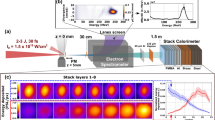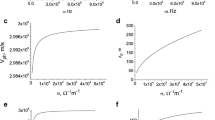Abstract
IN a series of experiments carried out in Prof. O. W. Richardson's laboratory at King's College, London, I have attempted to measure the velocity of the photo-electrons set free from a metal under the influence of soft X-rays, excited in the usual way by electrons from a hot filament falling on the radiator through an accelerating potential difference of 50–800 volts. The results obtained with the stopping potential method—in which a varied retarding potential is applied to a surrounding electrode, thus preventing all electrons with a kinetic energy below the corresponding value to escape—are difficult to interpret because of the masking effect of scattered radiation on the measurements for higher voltages. Various forms of magnetic methods have also been tried, of which the last one has yielded definite results. In this apparatus the photo-electrons are emitted from a narrow rod forming the axis of a short cylindrical ring, connected to the electrometer and kept at the same potential as the rod. A variable magnetic field, applied in the direction of the axis, prevents electrons with velocity less than a certain value from reaching the cylinder.
This is a preview of subscription content, access via your institution
Access options
Subscribe to this journal
Receive 51 print issues and online access
$199.00 per year
only $3.90 per issue
Buy this article
- Purchase on Springer Link
- Instant access to full article PDF
Prices may be subject to local taxes which are calculated during checkout
Similar content being viewed by others
Author information
Authors and Affiliations
Rights and permissions
About this article
Cite this article
RUDBERG, E. The Energy of Photo-electrons produced by Soft X-rays. Nature 119, 704–705 (1927). https://doi.org/10.1038/119704a0
Issue Date:
DOI: https://doi.org/10.1038/119704a0
Comments
By submitting a comment you agree to abide by our Terms and Community Guidelines. If you find something abusive or that does not comply with our terms or guidelines please flag it as inappropriate.



